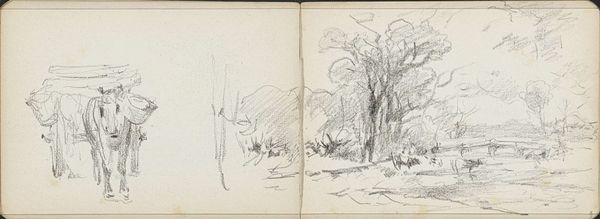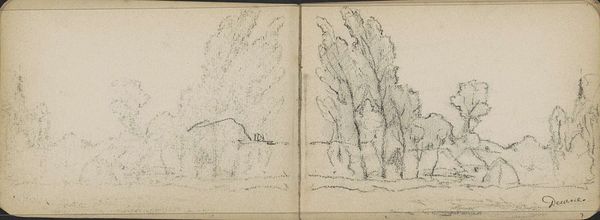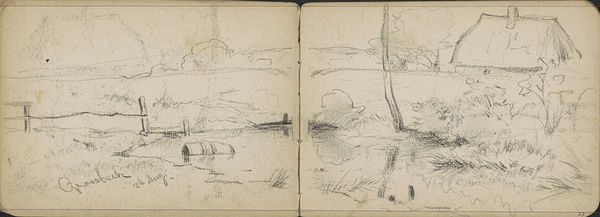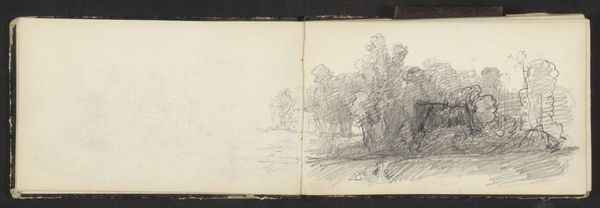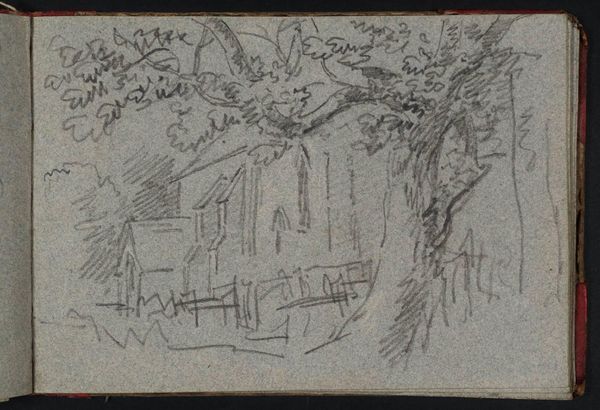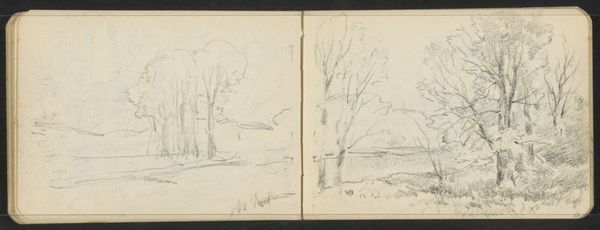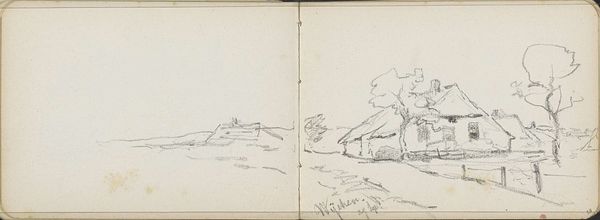
Dimensions: height 113 mm, width 159 mm
Copyright: Rijks Museum: Open Domain
This pencil drawing, called 'Farm in Groesbeek,' was made by Willem Cornelis Rip sometime in the late 19th or early 20th century. Rip was a Dutch artist who lived through a time of major social change, from the end of colonialism to the rise of new ideas about nationhood. This drawing looks like a simple landscape, but it also reflects the complicated relationship between land, identity, and power. Rip has chosen to depict the Dutch countryside, perhaps to make a statement about the beauty and worth of the Dutch homeland. These kinds of images were particularly loaded given the changing face of Dutch society. Rip’s careful attention to the landscape invites us to consider the various ways identity is bound to place. It presents a view of the Netherlands that invites us to reflect on the histories, struggles, and cultural meanings embedded in our landscapes.
Comments
No comments
Be the first to comment and join the conversation on the ultimate creative platform.

